Posted by Managementguru in Business Management, How To, Project Management, Startups, Strategy
on Nov 17th, 2014 | 0 comments
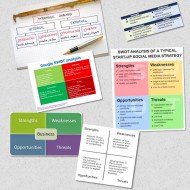
Startup Success Secret – Know your weaknesses “Don’t be a lone wolf. Lean on the experience and smarts of your teammates, investors, and mentors to help solve the tough problems and take advantage of the opportunities – SETH BANNON, Amicus First-time entrepreneurs are often oblivious to their own weak spots. Getting to know your strengths and weaknesses is easier said than done. Self-assess yourself by making a simple list of every business skill you think you possess. Then, add other skills that you think make a good leader/business owner. Add any additional questions you think would be helpful. Take stock of the lacunae in your skillsets, and rank which positions you need to hire first. “Know your core competencies and focus on being great at them. Pay up for people in your core competencies. Get the best. Outside the core competencies, hire people that fit your culture but aren’t as expensive to pay.” – Mark Cuban If you want your business to be successful, challenge yourself, be honest with yourself, surround yourself with talent, and watch success find you. As you reflect back on the evolution of your business, it will be clear to you that you would not have gotten to this point had you not identified your strengths and weaknesses, looking to fill your weaknesses with external talent. Example SWOT: A start-up small consultancy business might carry out the following SWOT analysis SWOT Analysis Why use SWOT Analysis? SWOT Analysis is a very effective way of identifying your Strengths and Weaknesses, and of examining the Opportunities and Threats you face. Carrying out an analysis using the SWOT framework helps you to focus your activities into areas where you are strong and where the greatest opportunities lie. Strengths: Being able to respond very quickly due to lack of bureaucracy and red tape, no need for higher management approval, etc.Being able to provide hundred percent good customer care and satisfactionStrong reputation within the marketBeing able to adapt to the changing market quicklyLittle overhead, so can offer good value to customers Weaknesses: The company has no market presence or reputationHas a small staff with a weak skill base in many areasVulnerable to vital staff attritionCash flow will be unreliable in the early stages Opportunities: Business sector HAS SCOPE FOR EXPANSION , with many future opportunities for successLocal community wants to encourage local businesses as it provides work opportunities to the people of that communityCompetitors may be slow to adopt new technologies Threats: Will developments in technology change this market beyond our ability to adapt?A small change in focus of a large competitor might wipe out any market position we...

Posted by Managementguru in Human Resource, Organisational behaviour, Principles of Management, Training & Development
on Mar 19th, 2014 | 0 comments
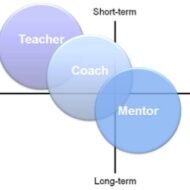
Coaching and Mentoring are the two strategic pillars of a business organisation without which the employees would be mere robots working without job satisfaction. The Definition. A coach is someone who provides guidance to a client on their goals and helps them reach their full potential. A mentor is someone who shares their knowledge, skills and/or experience, to help another to develop and grow. Objectives of Coaching The main purpose of coaching is to develop the employee as an effective perfomer. It involves the following: 1) Helping him to realise his potential as a manager. 2) Helping him to understand himself – his strengths and his weaknesses. 3) Providing him an opportunity to acquire more insight into his behaviour, and analyse the dynamics of such behaviour. 4) Helping him to have better understanding of the environment. 5) Increasing his personal and inter-personal effectiveness through effective feedback. 6) Encouraging him to set goals for further improvement. 7) Encouraging him to generate alternatives for dealing with his problems and prepare an action plan. 8) Helping him to review in a non-threatening way his progress in achieving various objectives. 9) Providing empathetic atmosphere for sharing and discussing his tensions, conflicts, concerns and problems. Download this Coaching Goals planner that will help you in measuring the outcome effctively. 👇 Coaching-Goals-PlannerDownload Objectives of Mentoring The main purpose of mentoring is to provide opportunity to young people to share their concerns and get both moral support and guidance for their development. It involves the following : 1) Establishing a relationship of trust 2) Modeling beahviorual norms for the young person 3) Listening to the person’s concerns and problems 4) Helping him to search alternative solutions for the problems 5) Sharing own relevant experiences 6) Responding to his emotional needs, without making him depend on the mentor 7) Developing long-lasting, personal, and informal relationship. Who is your most trusted advisor when it comes to important issues affecting your business? A small stats in percentage. Fellow business owner – 31Business coach – 24Family member – 18Accountant – 8Employee – 6Consultant – 4Friend – 3Lawyer – 2Other – 4 In which areas would a business coach have the most impact for your business? Strategic planning – 31PR / Marketing / Social media – 14Leadership – 11Succession planning – 9Managing change – 8Profitability – 8Productivity – 7Employee relations – 5Other – 7 Five Tips for Coaching Employees Define your role as a coach Create a safe environmentHelp them define and verbalize their answers, directions and actions. 2. Listen to what is said Be curious, Seek to understand“Tell me more….” “What’s happening….” 3. Observe what is heard and seen Focus on just the factsShare what you observe providing a judgement-less summary.“Here is what I heard you say….”“So it sounds like you are or want to….” 4. Validate what is felt -share the emotion and acknowledge it 5. Empower what is possible – Forward the thinking, explore, options showing faith and optimism. If you are like most of us, you are constantly striving for more engaged employees. Engagement not only leads to higher job satisfaction and lower turnover but also increases productivity and revenue. But how do we boost engagement among our teams? The answer is through coaching. 80% of those who have received coaching report positive impact in areas such as work performance, communication skills, well-being and business management strategies. Download this Achieving Goals Planner to form an idea about effective habits. 👇 Achieving-Goals-PlannerDownload 65% of employees in a strong coaching culture are highly engaged. Organisations with strong coaching cultures report revenues above those of their industry peer group and report higher employee engagement. While more and more organisations are using coaches as a key strategy...

Posted by Managementguru in Decision Making, Human Resource, Principles of Management, Project Management, Training & Development
on Mar 19th, 2014 | 0 comments
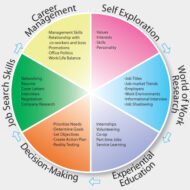
Have you ever thought about how to gain insight into yourself? Well, it is high time, if you really want to make it to the top of your career path and it is supposed to be the best personal strategy. Setting up of long range plans helps you to formulate your career strategies accordingly. To reach the destination, you need to have clear travel plans. Like wise, devising your career plans is inevitable to reach the ultimatum in your work environment. Following is a five step chart to help you create a solid career plan. Self Evaluation What do you enjoy? What are your priorities? Strengths and weaknesses? Name the things you want from a job? Skills Analysis What are your qualifications and experience? What are your key strengths and skills? What are your biggest achievements to date? What are your areas of development/ which area of interest excites you the most? Set your direction The broad industries that really appeal to you. The types of roles that would suit you best. How these options match your personal preferences? Key skills you’ll need to develop. Commit to a time frame Make milestones for the next six, twelve, eighteen months. How will you achieve your training and education goals? How will you gain additional skills and experience needed? How will you expand your network, and by when? Review your career plan Now you know your goals and how to achieve them, monitor your progress at least every six months to stay on track. I reckon that the following tenets infuse some confidence to those who want to achieve: Set your goals highNever settle for lessNever under estimate yourselfYou are born to achieve somethingYou are different from othersYou possess that “in thing” that is going to take you places Career advancement, is something that is not the sole proprietorship of the managerial cadre. It applies to anyone who has the “will” to learn and move forward. One’s attitude towards time, achievement, change, material things, work etc., determines the extent to which he is prepared to pursue his career with a long range plan. managementguru.net Decision Making: Another important aspect of career planning is the tough preposition of decision making. If a qualified and experienced manager is adept in all areas of management, naturally he gets confused as to “which way to go”, when presented with a chance to take up another job, in pursuit of better career prospects such as pay or promotions. People sometimes tend to resist career planning for the fear of making decisions and sometimes due to the fear of failure of achieving goals in the new set up, which might be a big blow to their ego. This dilemma of choosing a goal is commonly noticed in students who want to pursue higher education. Since it involves not only decision making but also determines their capability to be successful in the chosen field of activity. If an individual wants to become a doctor, he or she has to give up to pursue other opportunities, say, to become a lawyer or an engineer. Commitment: Furthermore, career advancement means more involvement and commitment, which makes you a quick learner. And in the process to achieve your goals, you become well versed in the area of specialization, however complex the subject or situation may be. Psychology has its role to play in career planning too. People who are extroverts easily manage to work things up to their advantage, for the simple fact that they socialize well, which is important for a manager to be a good liaison. Time Frame: The planning horizon of your career depends on the time taken to make yourself qualified to suit...

Posted by Managementguru in Business Management, Marketing, Operations Management, Principles of Management, Strategy
on Mar 16th, 2014 | 0 comments
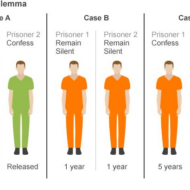
Game theory and strategy What is Game Theory: Set of concepts designed for decision making in situations of competition and conflict under specified rules. The prisoner’s dilemma: The prisoner’s dilemma is a canonical example of a game, analyzed in game theory that explains why two individuals might not cooperate, even if it appears that it is in their best interest to do so; Albert W. Tucker formalized the game with prison sentence payoffs and gave it the “prisoner’s dilemma” name. To solve many practical problems that are encountered in economic, military or other disciplines, one has to deal with situations in which there are two or more conflicting parties striving for the same objective and the outcome of each action of one party depends solely on the opposite parties choice of a course of action. As we all know only one horse can win the race ultimately and the other parties only can prolong the race or see to that they make every possible move to delay the opponent’s success. So, what’s this game theory all about? This is a special mathematical method that was evolved mainly to analyze conflict situations where the number of competitors is finite, each participant has a definite set of actions to choose and there is a conflict of interest between the competitors. So it helped the participants to reach a decision that would put them in the winning post. This theory has spilled its implications on business situations where success is the motto and conflict and competition the order of the day. Only the best among the best survive. Darwin’s theory, “Survival of the fittest” applies not only to biological organisms but also to business organizations which are also abuzz with activity. Chance Moves: Games like chess, checkers are played according to a definite set of rules laid down and these game patterns has inspired business persons to introduce strategies in business, where the concentration is mainly focused on the chance moves that defeats the opponent. Big business corporates mainly concentrate on the strengths and weaknesses of their competitors to have an edge over them. A real game is controlled and regulated by the statutory rules to be followed but a business game involves lot of killer instincts and intuitions combined with rational thinking and logic. Optimal Strategy: The first party always puts himself in the shoes of the other party and tries to perceive how the other party would react in a particular situation. Although the aim is to win, choosing the optimal strategy is what matters. It will at least keep you in bay. Precise solutions can be arrived at if you plan your game fittingly. The anticipation and thrill that is involved in a strategic game is matchless. We witness a lot of firms imitating what the leader of the market does. The risk is borne solely by the firm introducing the change and the firm takes the major share of profit as it is the pioneer and if it loses the next strategic move is planned for. For a company with sound financial position, the chance move is worth giving a try, head or tail doesn’t matter. The stalkers are benefited by the waiting period during which they come to know of the pros and cons of the strategy employed by the leader. Games are played in the true spirit of sportsmanship, but a business faces cut throat competition. There is no space for any courtesy or liberal approach. If you are quick enough to pick the pulse of the people by gauging their preferences, analyzing the market conditions and employing timely strategies you will at...

Posted by Managementguru in Business Management, Change management, Marketing, Organisational behaviour, Strategy
on Feb 18th, 2014 | 0 comments
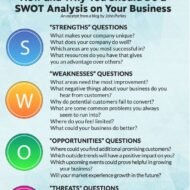
SWOT and Synergy SWOT Analysis On the basis of its resources and behavior, an organization develops certain strengths and weaknesses which when combined lead to synergistic effects. Such effects manifest themselves in the form of organizational competencies. It is necessary for a firm to look for and develop factors that adds to its strength, as strength is considered to be an inherent capacity which an organization can use to gain strategic advantage. Pic Courtesy: Clickfunnels A weakness, on the other hand, is an inherent limitation or constraint which creates a strategic disadvantage for the organization. Financial strength, for example, is a result of availability of financial sources and efficient rotation of funds. A weakness in the operations management area might be a result of inappropriate plant location, obsolete plant layout and technology. It has to be noted that an organization cannot enjoy the privilege of having only strengths and devoid of any weaknesses. Then the performance level would become saturated to the point of monotony and there exists no scope for growth or improvement. Only when presented with challenges, any functional area exhibits synergy, as strengths and weaknesses do not exist in isolation but combine within a functional area, and also across different functional areas. Synergy Synergy is needed at all levels for better productivity. Say, within a functional area like marketing, synergistic effort may occur when the product, pricing, distribution and promotional aspect support each other, resulting in higher level of marketing synergy. The same when happens at an even higher level, leads to operating synergy, say, for example, synergistic efforts between marketing and production department to decide on the production forecast and pricing. Distinctive competence helps a firm to develop strategic advantage that leads to comprehensive growth and development. Limitations of SWOT: A SWOT analysis can over emphasize internal strengths and overlook external threats It can be static and may ignore the changing circumstances It might give undue importance to a single strength or an element of strategy A strength is not necessarily a source of strategic advantage. Amazon.in...










